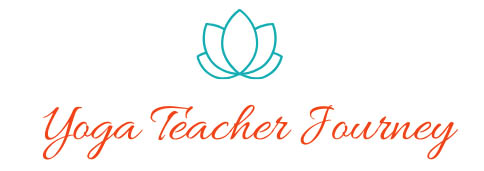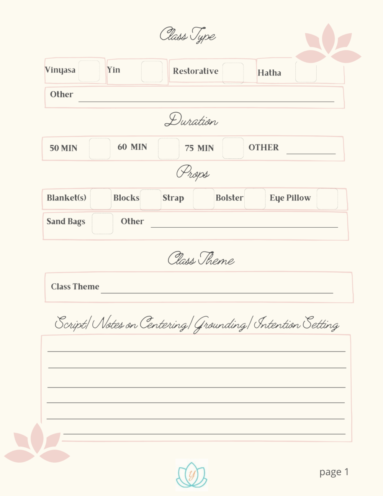There are buzz words in the yoga industry that sometimes go unexplained. We end up forming a definition in our minds based on what we think they are. Hopefully, the following post will help to dispel some of the ambiguity of two terms frequently used: all levels and all-inclusive.
Teaching All-Inclusive Classes
Creating an all-inclusive atmosphere for any class, means cultivating an experience where everyone feels welcome and included.
To do so, it is imperative to provide some context about the class for it to feel like a safe space for everyone. Introducing yourself, announcing the type of class you are teaching, and the duration of the class helps provide this framework.
Follow-up your introduction by indicating the props that may be needed during the class. Perhaps recommend having two blocks, a blanket, and perhaps a bolster on hand at the least. Even if they feel they won’t need them, it’s better to have them nearby so they can choose wisely if need be.
With that said, each class should have a class description posted on the studio website or booking software. Some responsibility should be placed on the student to have read the description and understand what type of class they have signed-up for.
Even so, if the student is brand new to the class, perhaps ask (discreetly) if they’ve practiced that style of yoga before and if not, give a mini description so they understand what to expect.
Your words have extreme power. For your class to be considered all-inclusive, choose your words wisely. Use language that suggests each student should focus on themselves during their practice, such as:
- There is no judgement in yoga
- Listen to your body
- You have the option to close your eyes OR take a downward gaze
- Honor what YOU’RE feeling today
- My cues are options and suggestions, but YOU know your body best
- Do what feels best in YOUR body
- Recognize the sensations YOU feel in your body
- This is YOUR time, YOUR practice
- Skip whatever you want or need to
- Take a child’s pose whenever you like
- Thank yourself for taking this time today to practice self-care
Avoid non-inclusive language which may be interpreted as insensitive. Do not refer to gender, race, ethnicity, age, ability, or body types. And no religion or politics. You may hear conversations amongst students or even between other yoga teachers and be tempted to chime in, but it is wise to keep your opinions to yourself. Once you express your opinion, you are potentially singling out someone.
Additionally, if your training did not include trauma-informed practices, you might consider taking an adjunct training in this area to fully understand the needs of the trauma-sensitive population.
Hopefully, this goes without saying but yoga is for everyone and every body. Remember Ahimsa (non-harming), the first of the Yamas, which is a foundational principle that weaves its way into all other yoga philosophy.
All Levels Yoga
An all levels class implies that it is suitable for any level (of experience) yoga student. This type of class offers modifications, options, and variations to meet students where they are.
The ideal all levels student has some foundational knowledge of yoga or has been through a beginner class of some sort (see 10 Tips for Teaching Beginner Yoga). In a class designed specifically for beginners, teachers have the time to break down postures, transitions, etc. in such a way that is much more beneficial for them.
All levels classes may include beginners, but students should take some responsibility for knowing what they signed-up for. They may be doing themselves a disservice by skipping the foundational beginner classes.
The teacher should make every effort to assist each and every student, right? But what happens when one student demands all the attention in the class? Do you change your entire class plan to revolve around that one student, and leave the rest of the class to do whatever? Or do you leave that student behind, and teach to the rest of the class?
Think of Asteya (non-stealing), the third principle of the Yamas. Is that student stealing from the other students’ time and practice? If your class is listed as all levels, you may be faced with this dilemma at some point.
My 200-hour teacher training taught us to teach to the lowest level (least experienced) student in the class. The logic being that the more advanced students know how to get the most out of their practice. For the most part I follow this practice.
For Both All-Inclusive and All Levels Classes
Use language that empowers the student and normalizes opting out of a posture:
- You can choose to take this option instead
- You can choose to stay here or move into…
- You can choose to skip this pose and take a child’s pose
- You can choose to place your hand on a block or…
- You can choose to lower your knee(s)
- If you’d like, you can take this option instead
- This is only an option, do what feels right in YOUR body today
- Fold forward ANY AMOUNT
- Lift your leg ANY AMOUNT
Avoid Language:
- That tells them how they should feel
- That implies little effort on their part such as:
- ”just keep your heel resting on your ankle”
- “it’s okay if you only reach this far”
- That includes negatives like:
- “if you can’t bring your hands down to the mat use a block”
- “if your ____ won’t reach then just”
- That indicates they are doing a “lesser” version of an Asana such as demoing and cueing “the full expression of the posture”

Practice What We Preach
- Give students space and time to process your words and feel the postures and breath in their own body and mind.
- Never physically force a student’s body into alignment in a posture.
- If you do offer “assists” always ask the student first, and in a way that their choice is discreet such as asking them to raise their hand while in Balasana (Child’s Pose), or reclined in Savasana (Corpse Pose) at the beginning of class.
- If a student requires and approves of a physical adjustment in a posture, begin with verbal cues. If more is needed, point to the area and in the direction needing adjustment. Only as a last resort and with permission, use your hands to move a student’s body into alignment.
Final Notes
In summary, every yoga class should cultivate an all-inclusive experience for students. Everyone should feel welcome and be given the opportunity to practice in a safe space free from judgement. Yoga teachers should be aware that their words have power and teach responsibly.
All levels classes are open to everyone and should be all-inclusive as well. Teachers should strive to guide students of various levels of experience with awareness using verbal cues, props, modifications, options, and variations to make it an accessible class for everyone.





